Tube-nosed Seabirds
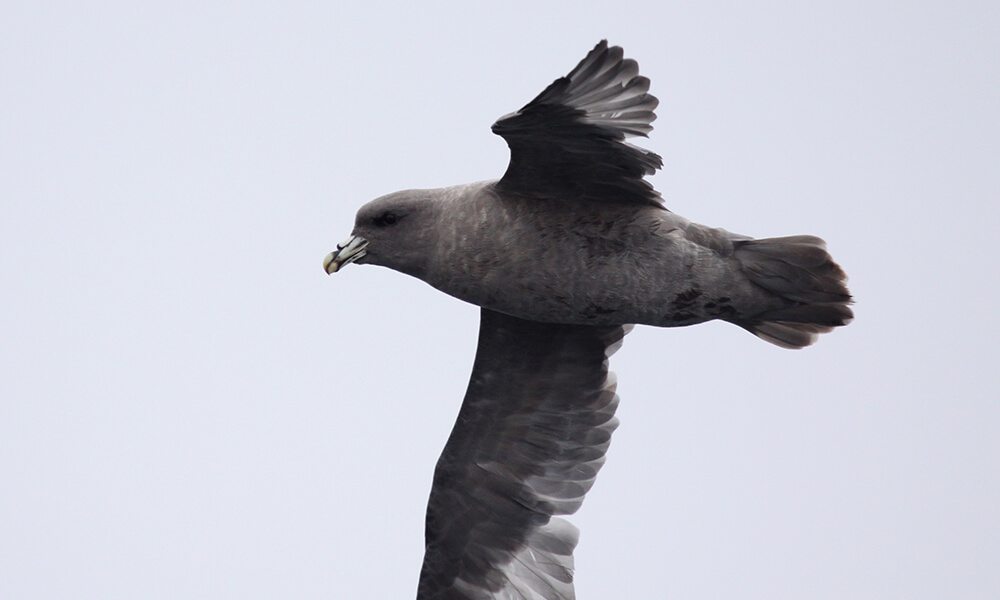
Facts about tube-nosed seabirds:
- Mainly surface feeders or scavengers; some divers.
- Expend very little energy flying.
- Webbed toes for swimming and taking off from the water.
- Highly migratory – carry food for their young concentrated in an oily slurry in their proventriculus (the third part of the digestive system, right before the gizzard).
- Tubular nostrils – extraordinary sense of smell.
Black-Footed Albatross (Phoebastria nigripes)

- Wingspan: 6-7 feet.
- Home breeding territory: Black-footed albatrosses breed on the Hawaiian Island chain (e.g., Midway Island and Kure Atoll) and on islands off the coast of Japan from late October to mid-June.
- Clutch size: The female black-footed albatross lays one white egg with brown speckling at the larger end.
- Impacts: Longline fishery operations, ingestion of contaminants such as mercury, and ingestion of plastic debris
- Status: The 2018 International Union for Conservation of Nature (IUCN) Red List states that black-footed albatross are near threatened.
- Fun fact: Black-footed albatrosses are equipped with specialized "salt glands" above their eyes that process excess salt. The glands produce a salty solution that is excreted through the birds' nostrils and down grooves of their beaks, where it drips off.
Laysan Albatross (Phoebastria immutabilis)
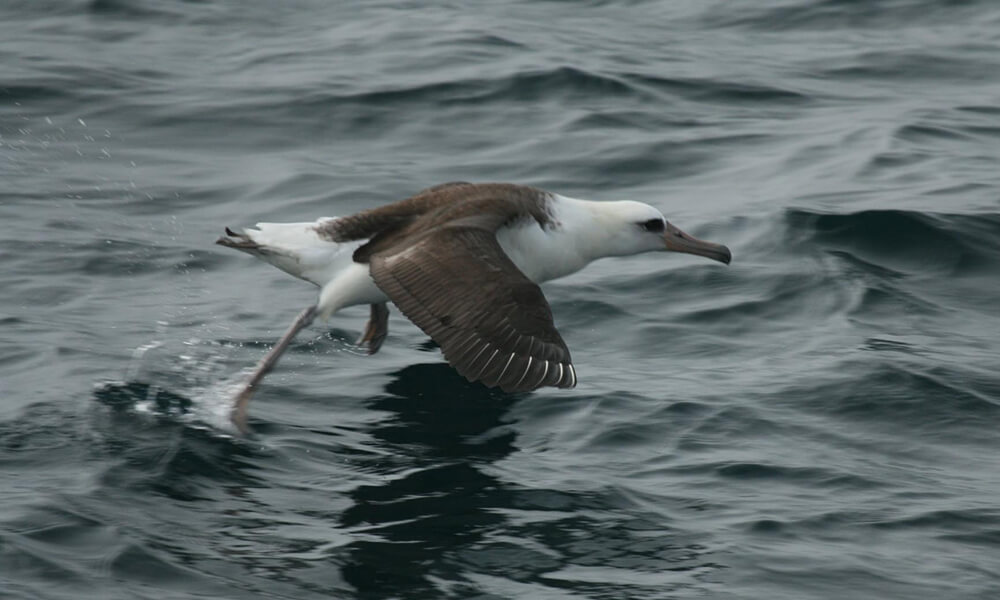
- Wingspan: 6.5-7.5 feet
- Home breeding territory: Laysan albatross breed mainly on the Northwestern Hawaiian Islands and Bonin Island south of Japan; but, some smaller colonies exist on Isla Guadalupe off Baja California and in the Revillagigedo Archipelago off western Mexico.
- Clutch size: One egg
- Impacts: Longline fisheries and plastic ingestion pose threats to this species.
- Status: The 2018 IUCN Red List states that Laysan albatross are near threatened.
- Fun fact: Some Laysan colonies have more females than males, which leads to numerous female-female pairs; some colonies are more than 30 percent female-female pairs.
Short-Tailed Albatross (Phoebastria albatrus)
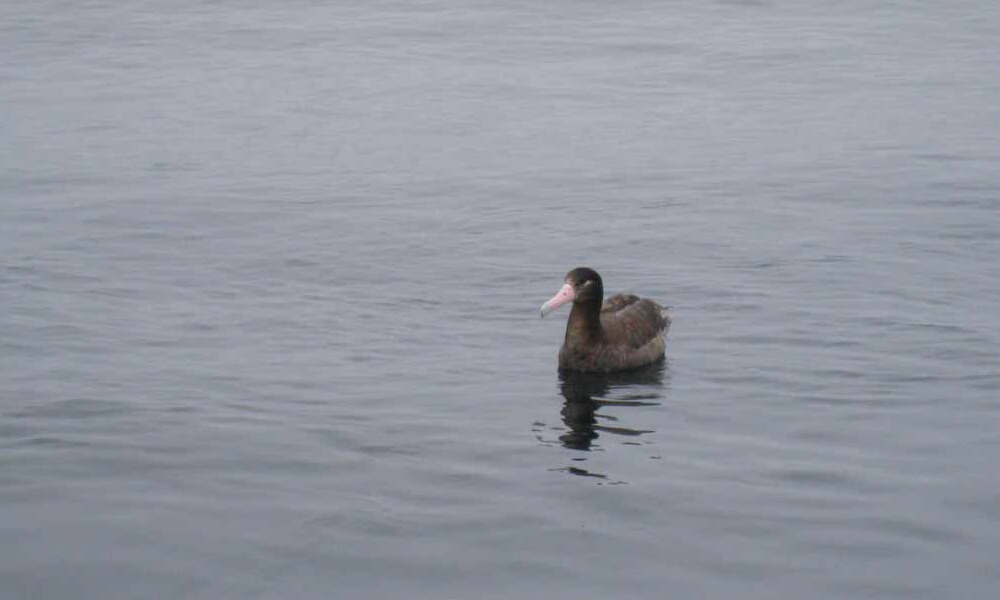
- Wingspan: 7-7.5 feet
- Home breeding territory: Most breeding occurs on islands off southern Japan on Torishima Island.
- Clutch size: One egg
- Impacts: Historically, short-tailed albatross were exploited for their feathers, eggs, and oil which drove population declines. Today, their main impact is bycatch by commercial fisheries.
Northern Fulmar (Fulmarus glacialis rodgersii)
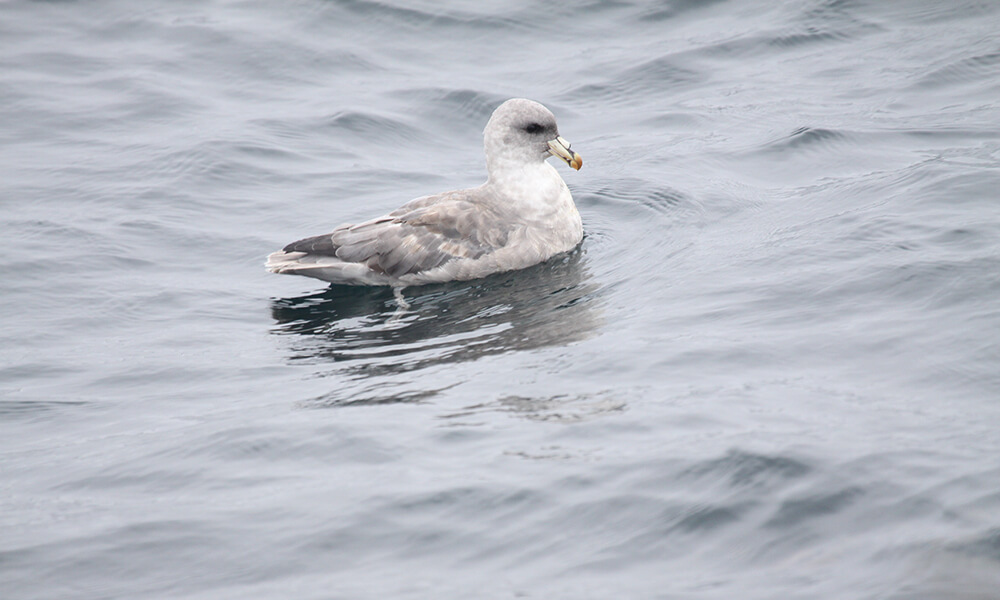
- Wingspan: About 3.5 feet
- Home breeding territory: Northern fulmars breed on steep cliffs in the Aleutians, off Alaska and Canada, and on Sakhalin Island.
- Clutch size: A single white egg
- Impacts: Northern fulmars frequently ingest marine surface litter and pollutants.
- Status: The 2018 IUCN Red List states that northern fulmars are of least concern.
- Fun fact: This is a polymorphic (multiple plumages) species with uniform gray plumage predominating in this area.
Sooty Shearwater (Ardenna grisea)

- Wingspan: 3-3.6 feet.
- Home breeding territory: Sooty shearwaters breed in dense, noisy colonies in New Zealand, Australia, Chile, Tasmania, and the Falkland Islands during October to April.
- Clutch size: The female lays one white egg in an underground burrow.
- Impacts: Bycatch with some commercial fishing practices, as well as plastic ingestion and climate change.
- Status: In 2019 the IUCN Red List stated sooty shearwaters are near threatened and noted declining populations.
- Fun fact: Sooty shearwaters fly by “slope soaring.” They ride wind that deflects off of ocean waves, making them appear to track the waves.
Pink-Footed Shearwater (Ardenna creatopus)
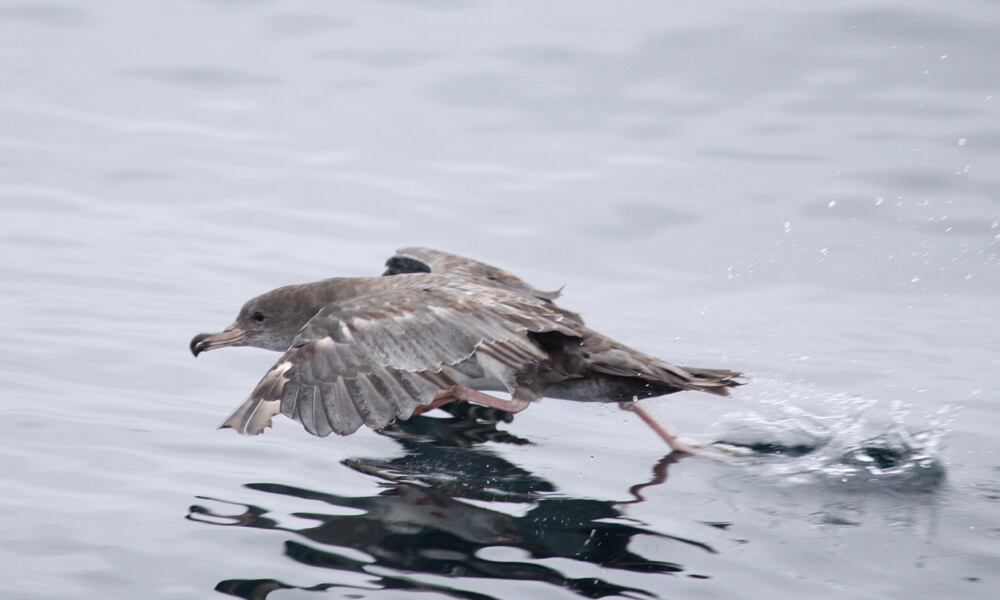
- Wingspan: About 3.5 feet
- Home breeding territory: The pink-footed shearwater breeds on three islands off the coast of Chile: Isla Mocha, Robinson Crusoe, and Santa Clara.
- Clutch size: They lay one egg per year in an underground burrow.
- Impacts: Major threats at colony sites are predation by non-native mammals and habitat destruction. Threats at sea are fisheries by-catch, plastic debris, and contaminants.
- Status: The 2018 IUCN Red List states that pink-footed shearwaters are vulnerable.
- Fun fact: Much like the sooty shearwater, the pink-footed shearwater rides the wind deflected upward off of ocean waves. Using this updraft it “slope soars.”
Buller’s Shearwater (Ardenna bulleri)
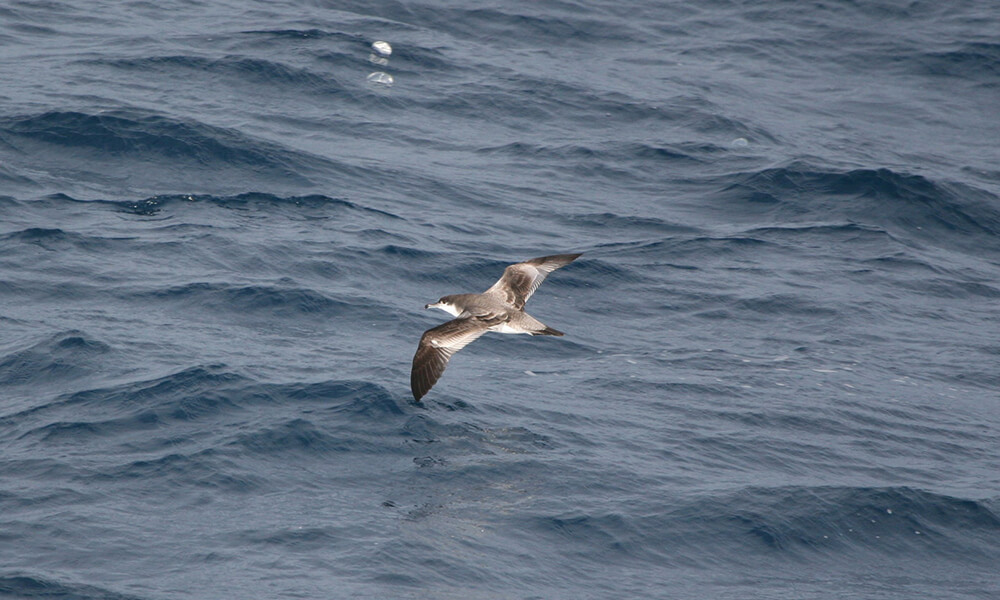
- Wingspan: On average 3.35 feet
- Home breeding territory: The Buller’s shearwater breeds in colonies on the Poor Knights Islands, New Zealand.
- Clutch size: A single white egg
- Impacts: The population is restricted to a very small area when breeding, and remains at risk from the accidental introduction of predators. They are also at risk of entanglement in fishing nets.
- Status: The 2018 IUCN Red List states that Buller’s shearwaters are vulnerable.
- Fun fact: The Buller's shearwater breed in the Southern Hemisphere between November through March and spend the rest of their year around the Eastern and Central Pacific.
Ashy Storm-Petrel (Hydrobates homochroa)

- Wingspan: Average 16.9 inches
- Home breeding territory: Half of the world’s population breeds at the South Farallon Islands. Ashy storm-petrels also breed on islands off Southern California and Mexico.
- Clutch size: Ashy storm-petrels lay a single egg.
- Impacts: Increased predation from native and non-native species threaten the already small population of ashy storm-petrels. These seabirds are also threatened by chemical pollutants, sea level rise, and oil spills, as well as fisheries and tourism activities.
- Status: The 2018 IUCN Red List states that ashy storm-petrels are endangered.
- Fun fact: Storm-petrels are at home on the open ocean and are able to survive monsoons and hurricanes. Mexican mariners call them “la golondrina de la tempestad” or “swallow of the storm.”
Black Storm-Petrel (Hydrobates melania)
- Wingspan: 18.9 inches on average
- Home breeding territory: The black storm-petrel nests mainly on islands off western Mexico. A few may nest in the Channel Islands.
- Clutch size: A single egg.
- Impacts: Invasive predators such as cats pose a risk to black storm-petrels. Black storm-petrels are vulnerable to climate change, specifically extreme temperatures.
- Status: Black storm-petrels are of least concern according to the 2018 IUCN Red List.
- Fun fact: Black storm-petrels often nest in abandoned burrows of Cassin's auklets.
Fork Tailed Storm-Petrel (Hydrobates furcatus)
- Wingspan: On average, 18.1 inches
- Home breeding territory: Fork tailed storm-petrels breed on islands in the Aleutians, British Columbia, and the Pacific Northwest
- Clutch size: One white egg
- Impacts: Vulnerable to oil spills (plumage and consumption), plastic ingestion, and non-native mammals at some breeding locations.
- Status: The 2018 IUCN Red Lists states that fork tailed storm-petrels are of least concern.
- Fun fact: Fork tailed storm-petrels capture their prey by hovering above the ocean and dipping down to grasp with their bill. They often patter the surface with their feet to steady themselves which makes it appear as if they’re walking on the water.
Click here for more information on pelagic seabirds of Cordell Bank National Marine Sanctuary

